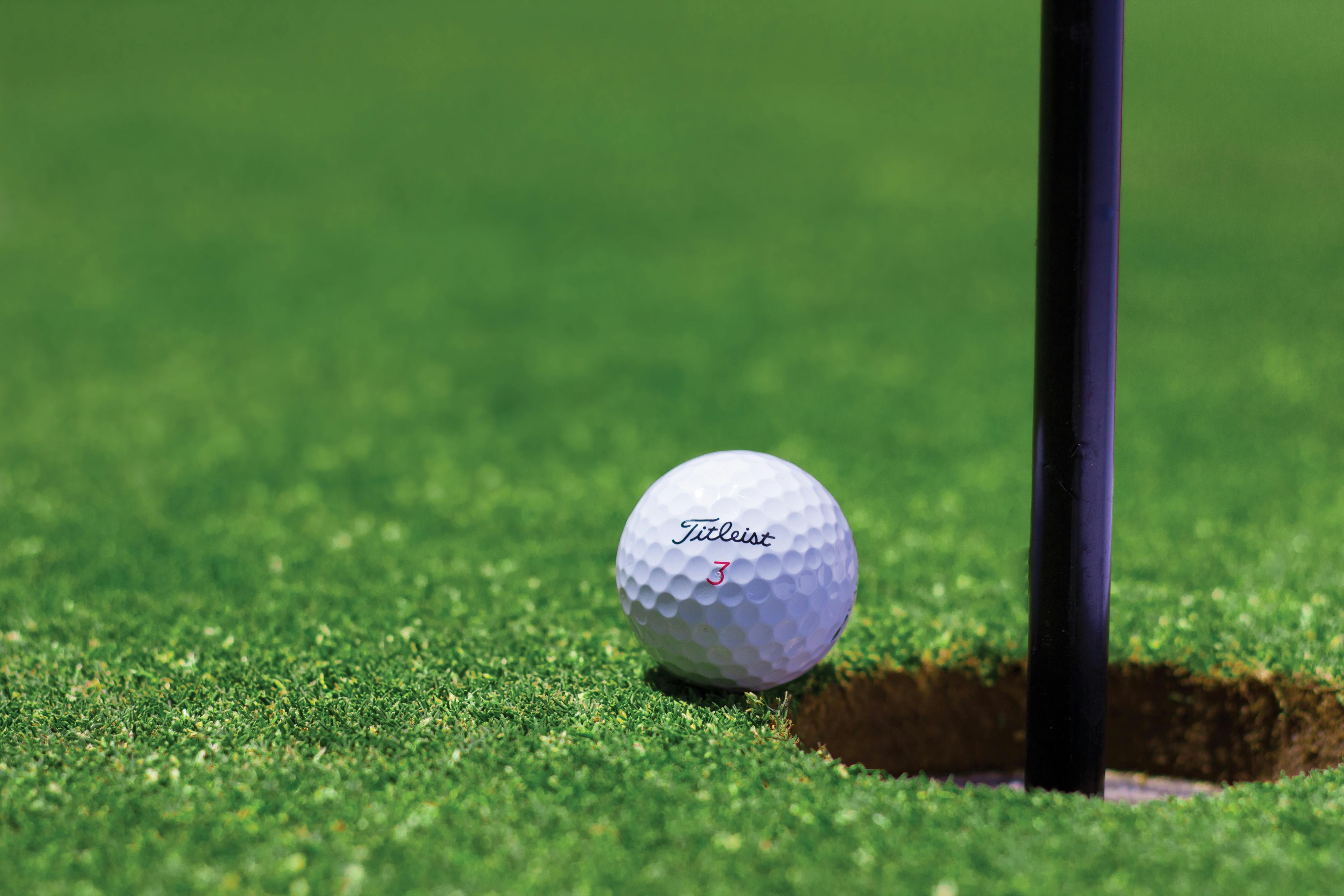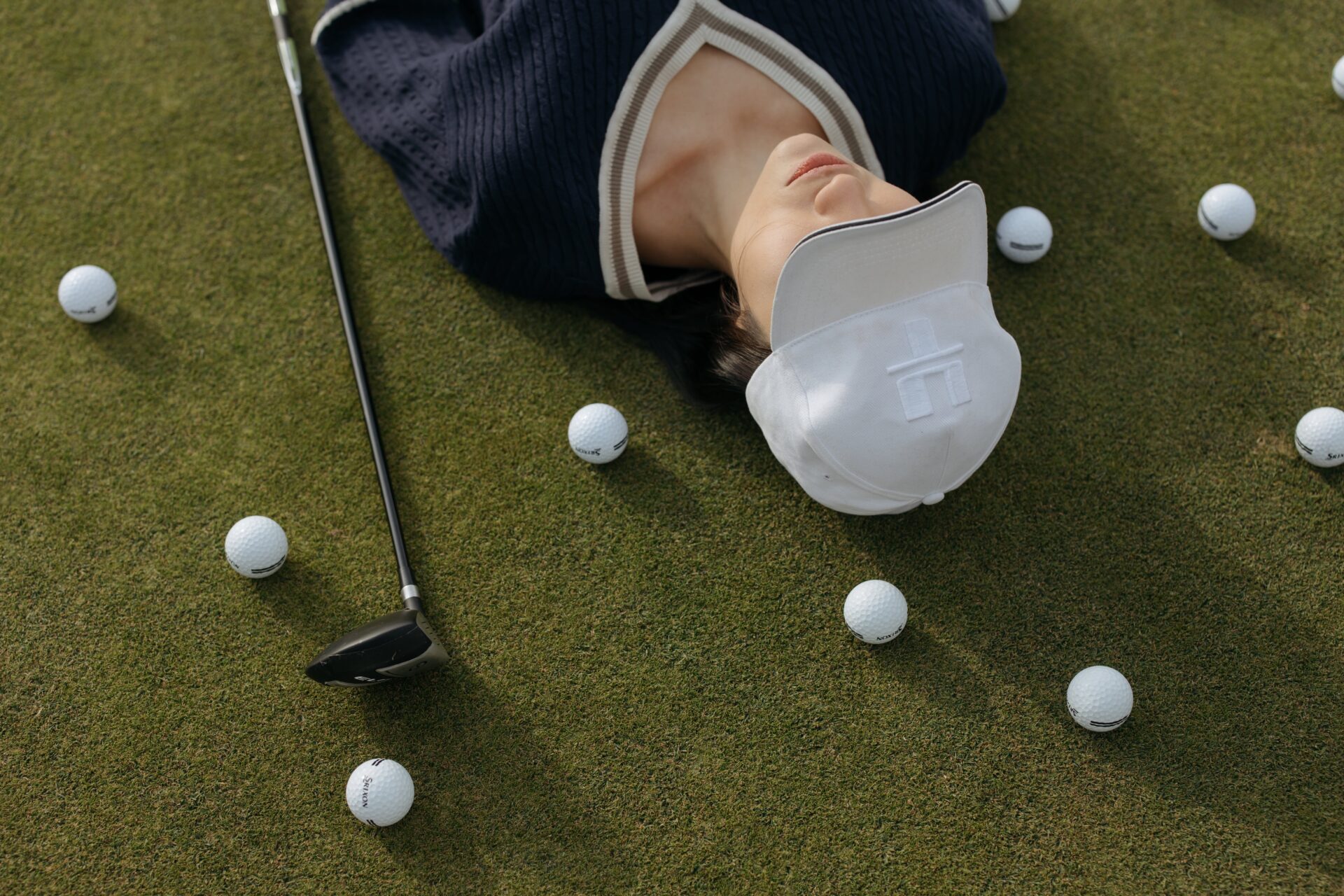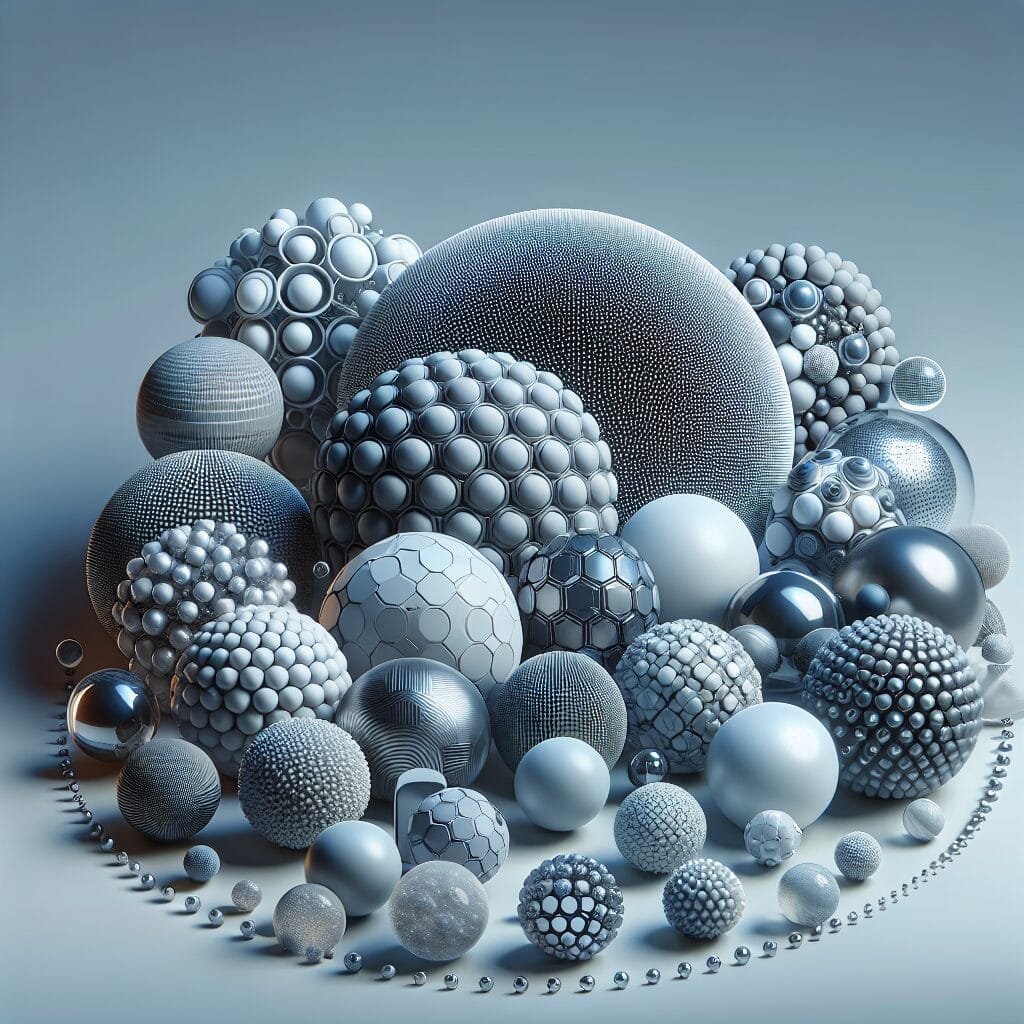Golf is a difficult game and one of the most common mistakes made by golfers is topping the ball. Topping the ball occurs when a golfer strikes the top portion of the golf ball with their club, resulting in an embarrassing and often painful shot. This article will provide some tips on how to avoid topping the ball during your next round of golf.To stop hitting the top of a golf ball, it is important to adjust your swing and body position. Make sure your hands are slightly ahead of the ball at impact, and that your weight is forward on your downswing. Additionally, keep your head down and focus on making contact with the back of the ball. Finally, ensure you are taking a full shoulder turn on the backswing and keeping your arms close to your body during the downswing. All of these adjustments should help you make better contact with the golf ball and hit it farther.
Focus on your Grip
One of the most important aspects of ball striking is having a good grip. Having a grip that is too tight can cause you to have a lot of tension in your arms and shoulders, which can lead to inconsistency in your swing. On the other hand, having a grip that is too loose can cause you to lose control of the club and make it harder to hit straight shots. Finding the right balance between tightness and looseness is essential for ball striking success.
Maintain Balance
Staying balanced throughout your swing is also very important when it comes to ball striking. Having good balance will help you stay in control of the club head and keep it on the proper path through the hitting zone. Make sure you practice maintaining balance while swinging and that you focus on keeping your head still during the swing.
Check Your Posture
Having proper posture when making contact with the ball is also essential for good ball striking. Make sure that you are standing up tall with your feet slightly wider than shoulder width apart. You should also keep your spine at a slight angle towards the target as this will help keep your arms in sync with your body during the swing.
Start Slow
When practicing ball striking, it’s important to start slow and gradually add more speed as you gain control of your swing. Starting slowly will allow you to focus on making contact with the golf ball correctly and feeling how it should feel when hitting it squarely on center. Once you’ve mastered this feeling, then you can start adding more speed until you are swinging at full force.
Practice Drills
Practicing drills designed to improve ball striking can also be very helpful. There are many drills available online or from golf professionals that can help improve different aspects of your game such as tempo, alignment, impact position, and more. Dedicating time each day or week to practice these drills will help improve your overall ball striking ability.
Understanding the Causes of Topping Golf Shots
Topping golf shots is one of the most frustrating aspects of the game for many golfers. Topping occurs when a golfer makes contact with the ground before contacting the ball, resulting in a shot that doesn’t travel very far. It can be caused by a variety of factors, such as poor technique, improper club selection, or an incorrect stance. Understanding these causes can help golfers identify and fix their topping issues, leading to improved performance on the course.
One of the most common causes of topping shots is poor technique. This can include an incorrect grip, which will cause the clubface to be open at impact and lead to shots that hit the ground first. Poor posture and swing mechanics can also cause topping, as they may result in an incorrect angle of attack and a lack of power in the swing. Taking lessons from a qualified instructor will help golfers identify and correct any swing flaws that are causing them to top shots.
Another potential cause of topping shots is improper club selection. Many golfers have clubs that are too long for their height or too light for their strength level, which can make it difficult to properly control shots. Having clubs that are properly fitted for a golfer’s height and strength level can make it much easier to control where each shot goes. Additionally, playing with clubs that are too stiff for a player’s swing speed can lead to topping due to insufficient power being transferred into the ball.
Finally, an incorrect stance can also contribute to topping shots. If a golfer’s feet are too close together or too far apart at address, then they may be unable to generate enough power in their swing or move out of the way quickly enough when making contact with the ball. Taking time to ensure that your stance is correct before each shot will go a long way towards avoiding tops.
By understanding all these potential causes of topping golf shots, you’ll be better prepared to tackle this frustrating issue and get back on track with your game. With proper technique, club selection, and stance adjustments, you’ll soon be back among the fairways striking solid shots with confidence!
How To Take The Right Setup For Better Ball Striking
Having the right setup before striking the ball is essential in any sport, especially golf. The key to a successful shot is creating the correct posture and alignment for your body. Proper setup will help you hit the ball more consistently and increase your shot accuracy. Here are some tips on how to take the right setup for better ball striking:
First, make sure your feet are shoulder width apart with a slight bend in your knees. This will help create a stable stance as you prepare to swing. Furthermore, make sure your weight is evenly distributed between both feet. Avoid leaning too far forward or back during your set up as this can negatively affect your swing accuracy and power.
Second, when positioning your arms, keep them slightly bent with your elbows close to your body. This will give you more control over the club and allow you to make a fluid swinging motion without sacrificing power or accuracy. Additionally, ensure that the grip on the club is secure yet comfortable. A loose grip can lead to errant shots so make sure it’s firm enough that you can feel the club in your hands while still allowing for natural movement through impact.
Finally, it’s important that you maintain good eye contact with the ball throughout set up and swing. By keeping an eye on where you want to hit and focusing on the target can help immensely in improving ball striking accuracy and consistency. Additionally, make sure to align yourself properly with respect to the target line prior to taking a shot as this will ensure that you hit it straight down range each time.
By following these tips on how to take the right setup for better ball striking, you’ll be able to improve both accuracy and consistency with each shot you take on the course!
Analyzing Your Swing For A Good Strike On The Ball
When you are playing a sport such as golf, it is important to analyze your swing in order to ensure a good strike on the ball. There are various techniques and drills that can help you improve your swing and ensure that you are able to hit the ball accurately and with power. Here are some tips for analyzing your swing and making sure that you get a good strike on the ball.
The first step in analyzing your swing is to identify what type of swing you have. There are different types of swings, such as the one-plane, two-plane, or three-plane swing. Each type of swing has its own advantages and disadvantages, so it is important to understand which type of swing works best for you before attempting any drills or techniques.
Once you have identified your type of swing, it is important to focus on improving each component of the swing individually. This includes working on your grip, stance, backswing, downswing, and follow through. Paying attention to each component will help you identify any weaknesses in your technique and develop a plan to correct them.
It is also important to pay attention to the way in which you rotate your body during the golf swing. Many golfers make the mistake of rotating their body too quickly or too slowly during their swings, which can lead to inaccurate shots or poor contact with the ball. A good way to practice this rotation is by using an alignment stick or a training aid such as an alignment rod or alignment mirror.
In addition to focusing on improving each component of your golf swing individually, it is also important to practice consistently in order to maintain good form throughout each round of golf. This can be done by hitting balls at a driving range or by playing rounds of golf with friends or family members who can provide feedback about your performance. Practicing regularly will help ensure that you are able to maintain good form throughout each round of golf.
Finally, make sure that you take time after each round of golf to analyze how well you played and what areas need improvement for future rounds. Taking time after each round will help ensure that any areas where improvement is needed receive adequate attention so that they can be corrected before the next round of golf begins!
By following these tips for analyzing your swing for a good strike on the ball ,you will be able improve both accuracy and power when hitting shots during rounds of golf!

Adjustments For Preventing Golf Ball Topping
One of the most common mistakes in golf is topping the ball. Topping occurs when a golfer attempts to hit the ball off of the tee, but instead hits below the ball, resulting in a weak and low shot. To prevent this from happening, there are a few adjustments that can be made. The first is to ensure that you are positioned correctly when hitting the shot. Make sure that your feet and hands are in line with the target line, and that your body is balanced and centered over the ball.
Another adjustment you can make is to ensure that your swing is consistent and smooth. You should avoid any quick or jerky movements during your swing as these can cause you to top the ball. Instead, make sure to take your time and swing through the entire motion with an even tempo and rhythm.
Finally, it’s important to pay attention to your grip on the club. Make sure that you have a light grip on the club and that your hands are in line with each other on either side of the handle. Having an incorrect grip can also lead to a topping of the ball due to incorrect contact between club and ball.
These adjustments should help you avoid topping the ball when playing golf, however if you still struggle with this issue it may be worth seeking professional advice from a PGA professional or golf instructor who can provide more tailored advice for improving your game.
Keeping Track Of Your Progress When Working On Ball Striking
When it comes to improving your ball striking, tracking your progress is essential. Keeping track of your progress allows you to see where you are making improvements and where you need to focus more attention. This can help you stay motivated and continue to make positive strides towards becoming a better golfer. Here are some tips for keeping track of your progress when working on ball striking:
First, keep a journal or record of all the shots you take during practice rounds and tournaments. Write down the details for each shot, such as the club used, the distance, and the result. This will give you an accurate assessment of your progress over time and help you determine which areas need more focus.
Second, use video analysis to evaluate your swing. Video analysis can provide valuable feedback on your form and technique so that you can make adjustments as needed. It’s also helpful to watch yourself hit shots from different angles so that you can identify any issues with your swing path or tempo.
Third, consider using a launch monitor or other tracking device to measure ball speed, spin rate, launch angle, and other metrics. This type of technology can provide detailed information about each shot so that you can pinpoint areas for improvement.
Finally, keep a practice log of all drills and exercises that you do during practice sessions. This will help ensure that you are making progress in all areas of your game. You can also use this log as a reference when evaluating your performance during tournaments or rounds of golf.
By taking the time to track your progress when working on ball striking, you will be able to make steady improvements in form and technique over time. This will help ensure that each round is successful and enjoyable!
Understanding How Different Clubs Affect Ball Striking
Golf is one of the most popular sports in the world, and it requires a lot of skill to be successful. One of the key elements to a successful golf game is understanding how different clubs affect ball striking. Different clubs have different weights and lengths, which can affect the trajectory and distance of the shot. In order to understand how different clubs affect ball striking, it is important to understand the factors that make up a club.
The first factor that affects ball striking is the type of club being used. Different types of clubs produce different levels of spin and power, which can drastically change the outcome of a shot. Longer clubs are generally used for longer shots while shorter clubs are used for more precise shots. Additionally, heavier clubs are normally used for more powerful shots while lighter clubs are best for more delicate shots.
The second factor that affects ball striking is the weight and length of the club head. Heavier club heads produce more power, while lighter club heads produce less power but more accuracy. The length of a club also affects how far a shot will travel; longer clubs hit farther than shorter ones, and vice versa.
Finally, the material used to construct a golf club also affects ball striking. Golfers typically use either steel or graphite shafts for their golf clubs; steel shafts provide more control over shots while graphite shafts provide increased distance but less control over accuracy. The type of grip on a golf club also affects ball striking; some grips are designed to increase accuracy while others provide increased power but less accuracy.
In conclusion, there are several factors that affect ball striking in golf, including the type of club being used, its weight and length, as well as the materials used to construct it. By understanding these factors, golfers can gain an edge over their opponents by knowing which type of club will provide them with optimal results on any given hole or course layout.

Conclusion
It is important to remember that there is no one-size-fits-all approach when it comes to avoiding topping the golf ball. With practice and experience, players should be able to find the technique that works best for them. Keeping your head still, practicing with a wider stance, and having an overall better understanding of your swing can all help you to stop topping the golf ball. When in doubt, it is always wise to consult a professional golf instructor who can provide personalized advice on how to improve your swing. With patience and dedication, you can conquer the dreaded topped shot and become a better golfer.
Overall, it is essential to understand what causes topping in order to fix it. By keeping these tips in mind, you can avoid topping the golf ball and improve your game overall.




